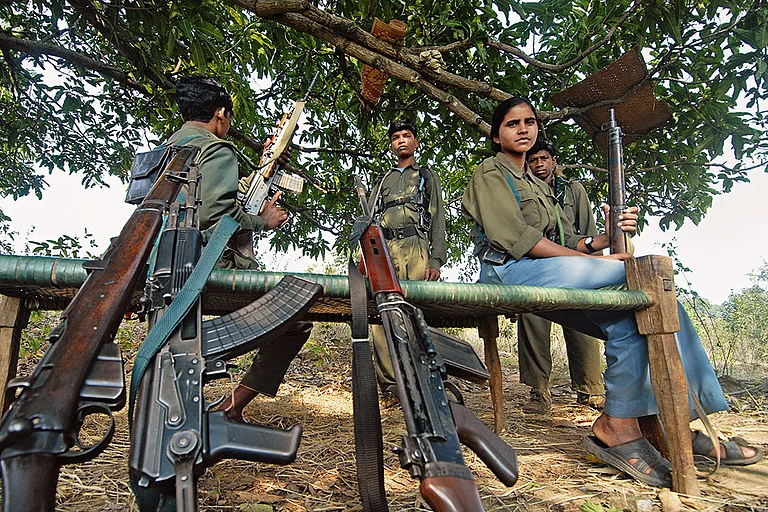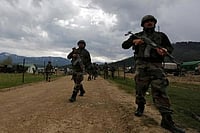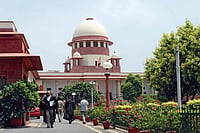As the protests surrounding the Hasdeo forests rage, leading up to the 2024 Lok Sabha elections, Chhattisgarh's Congress chief Deepak Baij joined the protests being held by tribals against the cutting of trees. Taking a dig at CM Minister Vishnu Deo Sai, he has accused the BJP's usage of using Sai’s tribal identity to garb the government helping Adani Enterprises, which owns the Parsa East and Kente Basan (PEKB) coal fields spread over the forest land. The tribal-dominated Hasdeo Aranya forest in Chhattisgarh’s Surguja district has resurfaced as an integral issue leading up the Lok Sabha elections.
In recent years, India's forest rights movements have witnessed a close battle with mining giants and corporates despite three crucial judgements of the Supreme Court -The Godavarman Judgement of 1996, The Samanta Judgment of 1997, and the Niyamagiri Judgment of 2013 -- that uphold the conservation of forest areas and rights of tribal communities. However, the recent introduction of the contentious Forest Conservation (Amendment) Act of 2013 has tried to overrule the past judgements along with diluting the rules under the Forest Rights Act, 2006.
However, from Odisha to Chhattisgarh and across the country, protest movements against mining corporates to save forest areas and safeguard the rights of the tribal community continue. And they have continued since the early 1920s.
Outlook looks at major forest protests that aimed at preservation of forests and the necessary conversation of ecological balance in the country.
The Bishnoi Protest
The Bishnois hailing from western Rajasthan and based on the fringes of the Thar, for centuries, have been active in conserving the ecosystem of the area. Maintaining the ecological balance has always been a priority for them. In the fifteenth century, Jambhoji, a resident of a village near Jodhpur, who came to be known as Swami Jambeshwar Maharaj laid down 29 tenets for his followers which included Jeev Daya Palani – being compassionate to all living beings and Runkh Lila Nahi Ghave which meant not cutting green trees. The protection of nature was placed with foremost importance in these tenets.
The sacrifice made by Amrita Devi and hundreds of other people stood in the way of Maharaja Abhay Singh of Jodhpur's desire to build a new palace which required wood for it. The trees near the village of Jalnadi were to be felled for the reason and Amrita Devi was killed when she tried to prevent the men and hugged the first tree.This triggered people from numerous surrounding villages to prevent the king's men. More than 363 people lost their lives trying to protect the trees. The king hearing about this, personally came to the village to apologize to the people, promising them that they would never be asked to provide timber to the ruler and that hunting would be banned near the Bishnoi villages. The Bishnois laid the precedence for forest protests in the country that followed in the centuries to come.
Chipko and Appiko Movements
The origins of the Chipko movement on the lines of the movement led by the Bishnois, can be traced back to the 1920s and 1930s. The British had resorted to rampant exploitation of forests and its resources in parts of Uttar Pradesh (now Uttarakhand) for infrastructural development. The Forest Act of 1927 had further helped British interests resulting in an increase in forest satyagraha movements across India. Following the establishment of the Dasholi Gram Swarajya Mandal (DGSM) founded by Chandi Prasad Bhatt in the early 1960s, the agitations were aimed and channeled to help unskilled and semiskilled construction workers in the Garhwal region of Uttar Pradesh to obtain employment.
The 1970 Alakananda floods that ravaged the banks and slopes led to a disaster, causing major landslides in the area. With the Government allowing a foreign company to fell trees in the area, CP Bhatt led people to protests and the Chipko Movement spread across Uttar Pradesh. The attention of the world fell on the movement when Sunderlal Bahuguna, an eco-activist and member of the DGSM led the movement along with hundreds of other women who hugged the trees to prevent them from being felled. It was Bahuguna's force and the impact of the movement that convinced then Prime Minister Indira Gandhi to ban the feeling of trees in the Kumaon area.
The Appiko movement, inspired by the Chipko movement, which began in September 1983, saw Salkani men, women, and children adapting similar measures to save the Kalase forest in Karnataka. It was under environmentalist Panduranga Hegde, the movement gained momentum - which forced the state forest department's fellers and contractors to stop cutting trees. Appiko, in Kannada, refers to "hugging". The movement raised awareness among villagers throughout the Western Ghats about the ecological threat posed by commercial and industrial exploitation of the forests, disrupting their natural livelihood.
The Silent Valley Project
When the Kerala State Electricity Board (KSEB) proposed the plan for a hydroelectric dam across the Kunthipuzha River that would run through the Silent Valley and submerge over 8sq km of untouched moist evergreen forest, and that it would generate electricity for the state of Kerala on an urgent basis, several NGOs strongly opposed the project and urged the government to abandon it. It would inevitably destroy the biodiversity of the region. The Silent Valley Samrakshana Samiti and Kerala Sastra Sahitya Parishad initiated numerous campaigns, protest meetings, rallies, and debates all over the state, morphing the campaign into a mass people’s movement. The protests led to Indira Gandhi refusing permission to build the hydroelectric power plant in October 1983. In November 1984, two weeks after her assassination, the area was declared a national park and was inaugurated by the next Prime Minister Rajiv Gandhi.
Save Aarey Movement
The Aarey forest, located in the Northern suburbs of Mumbai, with its lush greenery and rich biodiversity has numerous Adivasi settlements spread across the area of the forest who have been living in the area predating the Aarey Dairy farm which was set up in 1951. The Adivasis who had already lost chunks of the land to numerous projects, were disturbed by the prospect of another government project further disrupting the area in 2014. The then Chief Minister Prithviraj Chavan had proposed a plan to build a facility for washing and maintaining Metro coaches for the underground Colaba-Bandra-SEEPZ Metro project at Aarey Milk Colony. As it involved the felling of trees for the construction, the proposal received immense criticism from environmentalists and citizens, defining the ‘Save Aarey’ movement. Local NGO ‘Vanashakti’ approached the High Court with a plea to stop the felling of trees in the region. In response to protests, the State government constituted a technical committee in 2015 to investigate the impact of the project on the area.
The NGO Vanashakti then approached the HC to declare Aarey Colony a forest, but this plea was also dismissed. An instance even saw hundreds of policemen being deployed and Section 144 being invoked. A clash between protesters and police followed. It was a letter from a student to the then Chief Justice of India Ranjan Gogoi, that played an important role in preventing the felling of trees. The apex court considered the letter and ordered the Maharashtra government not to cut any more trees in Aarey. The State government complied and told the court that whatever was required for the Metro car shed had already been done. With this, the project was halted. When the Shiv Sena-NCP-Congress coalition came to power and Uddhav Thackeray took oath as the Maharashtra CM, he announced the scrapping of the construction of the Metro car shed at Aarey.


























